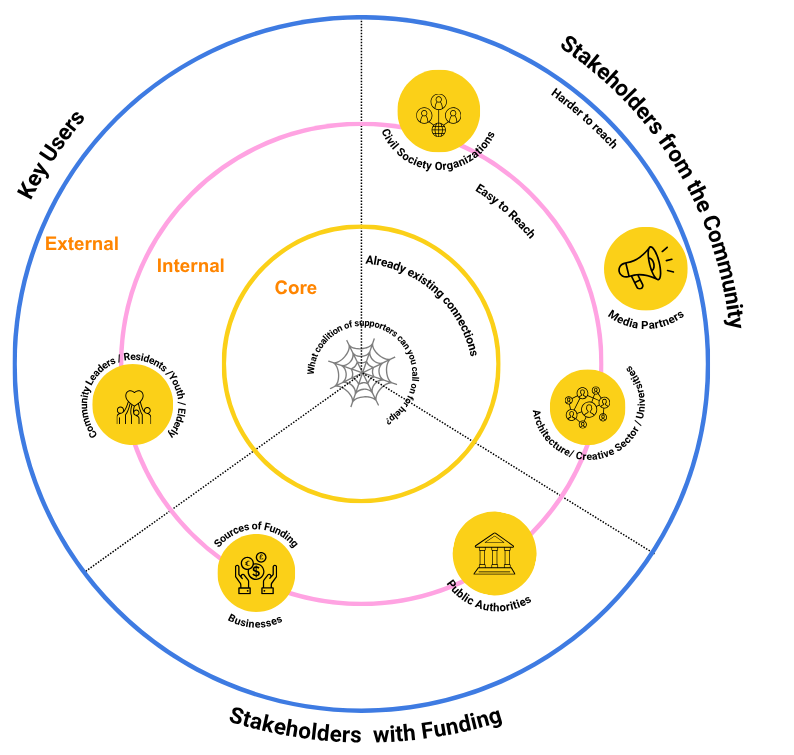Stakeholder Mapping
.png)
Overview
Stakeholder maps are a visual method to identify and consolidate who the main constituents of a project are and set the stage to centre those who are most likely to benefit and be impacted by your project. The primary advantage of utilising a stakeholder map lies in gaining visibility into individuals who hold sway over your initiatives and understanding the relationships among them. By charting out pertinent stakeholders, you enhance your ability to engage with them effectively and prioritise relationship development with key collaborators within your organisational framework.
Stakeholder maps are often speculative, with your team brainstorming people who may have an interest in your project. Therefore, try to be as comprehensive as you can and include everyone who might benefit, who might be adversely affected, to those who might hold key resources or be critical to connecting with different groups and communities.
This stakeholder canvas has been tailored with RECHARGE resources and methods, highlighting specific stakeholder types and how they might interact with your programme or service.
The initial process can be done as a sketch or with Post-its.
Definitions
Key Users: They are target users of your organisation's services and products and would ideally be co-creators of your programme.
Community Stakeholders: They can be institutions, peer organisations, universities, or government institutions that can support and connect you with your key stakeholders. With their diverse knowledge, they would be able to support your programmes and could be co-owners of your project.
Stakeholders with Funding: These might be government institutions, funding bodies, private businesses, both large and small, or organisations that can lead or connect you to consortia that might inform how you resource your programme and services.
Core: At the centre of the canvas, you have your core stakeholders. This circle is small because we want to sharpen our focus. Write down the main stakeholder(s) that are impacted by the project you want to conduct or the problem you want to solve
Internal: Just outside the core are your internal stakeholders. They are those who will consistently provide input and move the project forward.
External: Outside the internal stakeholders, the external stakeholders. They will likely be those who will stay updated to date with the project, provide feedback when consulted, and support dissemination activities.
Implementation
Explain the main idea of the activity and an overview of the session. Pass out post-its to participants or explain how the online canvas will work, depending on whether the session is online or offline.
Ask participants to try and be as exhaustive as they can in mapping out stakeholders, especially in terms of being open to working with lesser-represented groups or communities.
Give the group 7-12 minutes per section of the bullseye canvas
In the end, you might ask participants what they observe, i.e. what are some clear trends on the board by grouping similar responses, what are some surprises on the board, and what communication strategies might be needed, whether by groups of stakeholders or by proximity they have to the project.
To Consider in Your Activity Design
Templates
Various formats exist for stakeholder mapping, but this approach is one of the most straightforward for initiating the process. The Bullseye model provides a concise summary of all individuals connected to the product, regardless of their significance. The version of this activity conducted in the Prato Living Lab made use of a bullseye canvas.
Conduct a stakeholder mapping activity for your internal organisation, peer organizations or funders, and the community to create unique strategies for each category of stakeholder your organisation has. Whether you possess ample information or not, this method serves as a useful starting point for shaping the conversation. Adjustments can always be made later as you uncover more insights through your research.
.png)

Share